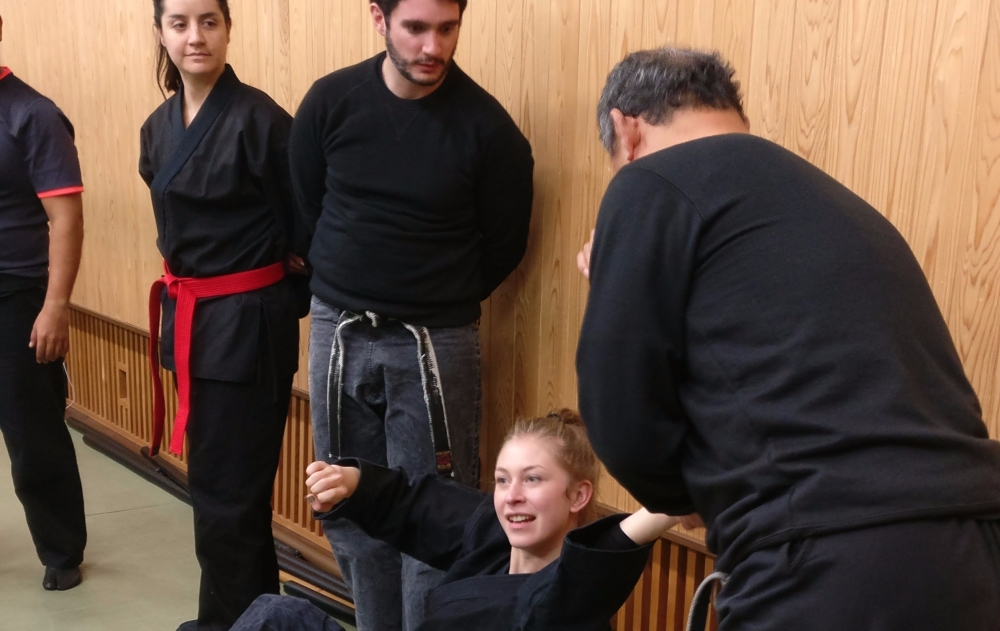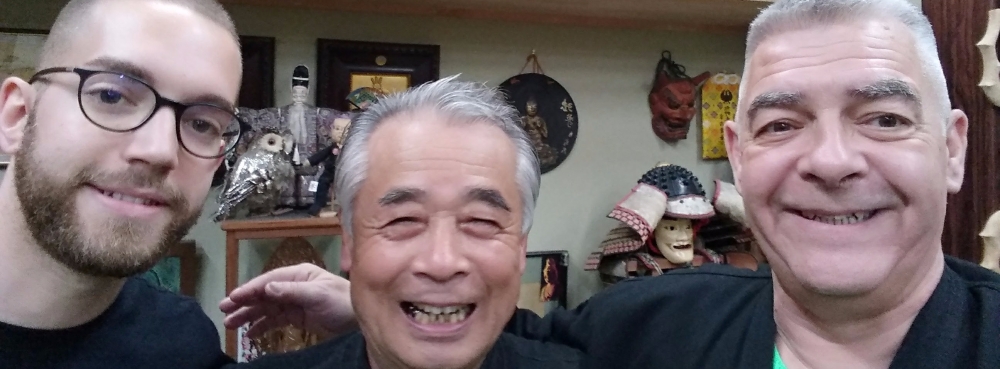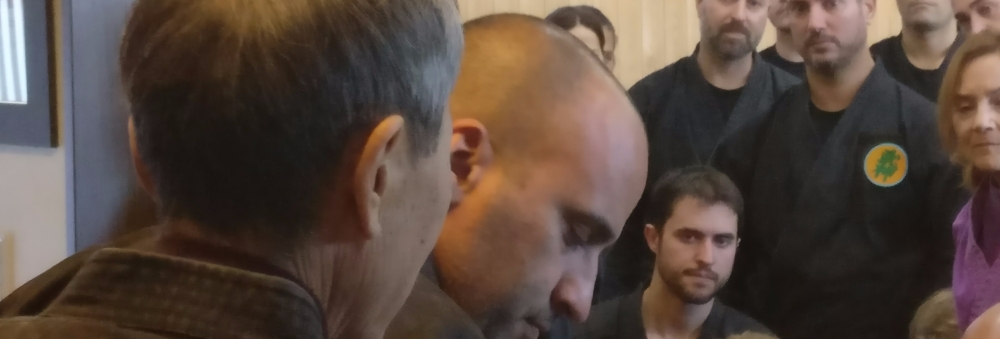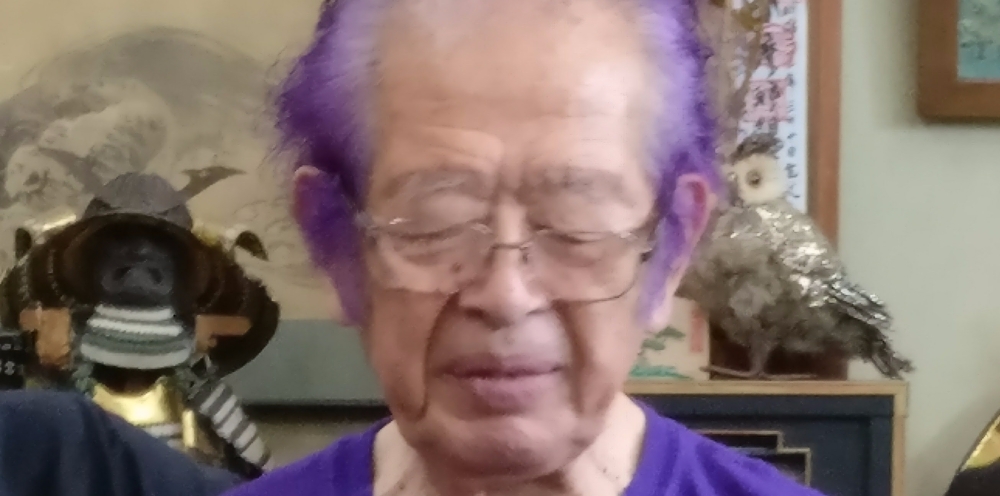From Shiro Kuma by kumafr
 Nagato sensei’s main idea was to remain protected at all time. This is Tōtoku. (1)
Nagato sensei’s main idea was to remain protected at all time. This is Tōtoku. (1) At the end of the class, Nagato sensei answered many questions about training. He shared with us many insights on how training was at the start of the Bujinkan. He said that those discussions were common practice after Sensei’s class.
At the end of the class, Nagato sensei answered many questions about training. He shared with us many insights on how training was at the start of the Bujinkan. He said that those discussions were common practice after Sensei’s class.  Noguchi has developed his taijutsu like every Japanese Dai Shihan. He has been my “teacher” since 1993. He is impressive and can turn any known Waza into something so different from the original technique.
Noguchi has developed his taijutsu like every Japanese Dai Shihan. He has been my “teacher” since 1993. He is impressive and can turn any known Waza into something so different from the original technique.


 A class with Senō sensei is always a pleasure. First he is a gentleman; second, you get out of it more confused than when you entered. His last two classes were no exception!
A class with Senō sensei is always a pleasure. First he is a gentleman; second, you get out of it more confused than when you entered. His last two classes were no exception! It’s been a long time since I got angry. Today I am.
It’s been a long time since I got angry. Today I am.